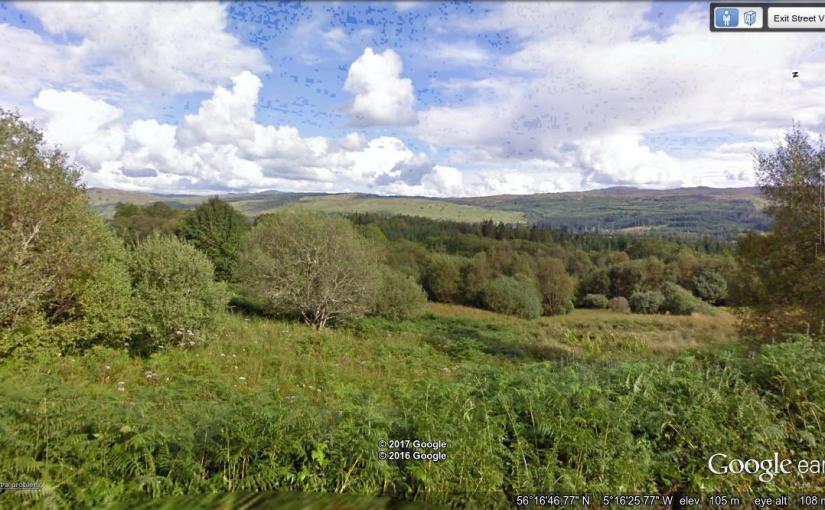We welcome your contributions to Northern Edge and we will publish as many communications as we can. In this section, we publish your correspondence, responses and short postings. You can contact us here
Request a notification when the next issue is published.
New Holistic Management project - from Jane Wilding
Hello everyone
My friend Chrissie Sugden and I are starting up a land restoration project using the Holistic Management method of grazing livestock - in our case, cows and sheep. This is a dream come true for us and a fantastic opportunity to demonstrate this method of grazing here on the west coast of Scotland - a system that produces wonderfully rich organic pasture with almost no inputs, promotes the health and nutrition of the animals, increases biodiversity, nurtures wildlife and sequesters carbon in the soil. If you want to read more about how it works have a look here.
We've got the lease of a 30-acre 'field' and have started work on the bracken, rushes and willow scrub! You can follow our progress on my blog.
We'll be using WWOOFers to help with the hard work of clearing and next year we will be looking for agricultural funding if there is any left (agricultural funding goes in cycles and this cycle ends next year - and after Brexit who knows what may happen!) but in the meantime we need fencing, water tanks, pipework, and a barn before we can put our livestock on.
If you're of a mind to support a good cause in the field (no pun intended!) of agro-ecology, biodiversity, sustainable food production and local resilience - here is one! All donations, large or small, will be put to very good use.
If you want to support us please go to my Crowdfunding Page
Thank you!
Jane
 |
|---|
| Homestead Field - picture from Jane's blog. |
Boom-Boom?
Hi Angus and all on Brexit Island
Life here in Brussels continues to be interesting. The other day I saw a documentary on Chinese investments in Ethiopia - especially textile factories. Apparently the "economy of Ethiopia" is booming - lots of opportunities for foreign investors, especially in buildings as people move into the cities.
Apparently, the government of Ethiopia confiscates the land from peasants, and then sells it to foreign investors - Chinese for factories, Arabs for vegetable farms, French for vineyards, etc.
The "good" (?) news is that the cost of an Ethiopian textile worker is about 1/10 the cost of a Chinese textile worker - and the European markets are nearer - so transport costs are lower.
AND, apparently the average Belgian buys 4 times as much clothing as 30 or 40 years ago - they expect their clothing to only last 3 or 4 times wearing, or was that washing? Anyway, since clothing is a "fashion item" you don't want it to last, because you are only going to wear it a few times. STUPID! And, the thing with Oxfam, etc, of sending 80% of used clothes to Africa is drying up - they are already making enough used clothes in Africa themselves, so they don't need garbage from Europe.
It's a bit like the Chinese are banning the import of European plastics because they are now making enough plastic garbage themselves.
It's difficult to imagine a more stupid world!
All the best, in hope of sanity soon,
Tintin (still busy looking after Snowy)
Backwards to the Future?
Dear Angus
Regarding a recent BBC broadcast about the 'revitalising'(?) of the cotton industry. Someone gleefully telephoned today to inform me about the Lancashire cotton revival. According to her it would get the people living off benefits into work again.
I am not amused - I consider it a retrograde step. It may be just a 'hummock' in the complete running down of the process. The cotton industry lasted a bare 100 years. I reckon this current 'revival' will not last that long - new-fangled machines and all.
I had a telephone chat with a lacemaking friend yesterday. During the discussion on the textile news my friend recounted the following.
About forty years ago when she was a
student at Art School in Shropshire she
went to visit a couple who had a little
cottage industry. The husband had wood
turning skills and turned lace bobbins.
The wife made lace and showed a small
piece to my friend who was asked to
identify the thread. My friend, still very
much a young student, could not do so.
The lady explained that the item was
made from nettle thread. She had gone
through all the processes of preparing
the fibres - retting, spinning etc.
Since then my friend has learnt that
nettles are related to flax. Yesterday
she suggested that using thread from
natural fibres grown in this country is
the way some of us lacemakers could
go.My experience with nettles was when I dried bundles of them ready for stripping off the leaves to make tea. The bundles were hanging from a rafter in an open but rain proof barn. In order to check on how well the nettles were drying I ran my hand down a bundle. I was most surprised at the lovely silky feel to the stems and leaves.
Many uses for nettles - what a wonderful plant.There is an interesting firm based in Birmingham: www.wildfibres.co.uk
Maureen Boustred